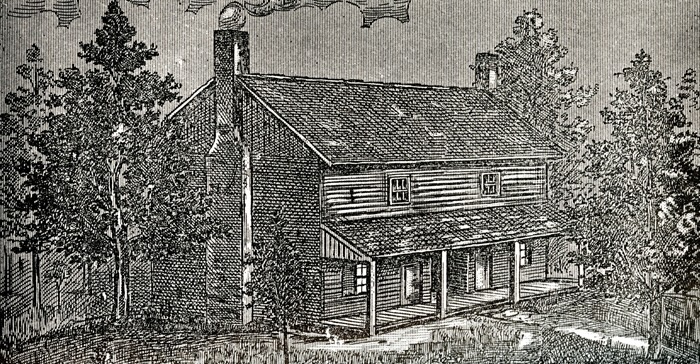Barboza is currently the subject of a solo show at Nunu Fine Arts in New York.
While organizing her late mother’┐Įs room some 20 years ago, Ana Teresa Barboza found a box of naturally dyed yarns of various hues. As she carefully unraveled the threads, a flood of emotions and anecdotes unfolded. This box, a portal to the past, became the unexpected muse for Barboza’┐Įs mixed-media textile work. The yarn became a bridge between worlds’┐Įa tangible connection to her Peruvian roots, the forces of nature, and a tribute and testament to her mother’┐Įs enduring influence.
’┐ĮI felt the need to talk about traditions in my work, specifically how objects hold memories that we need to revisit from time to time to remember who we are and where we came from,’┐Į Barboza recently told ARTnews.
Born in Lima and currently based in Lobitos, Peru, Barboza began her career as a fashion designer as a way to support her art-making, which initially was photography based. In addition to embracing a new medium, her mother’┐Įs death prompted Barboza to create work that reflected on the social, political, and environmental nuances of Lima, with an eye toward exploring the city’┐Įs centuries-old herbal traditions.
For her latest solo show, ’┐ĮIn a State of Latency’┐Į at Nunu Fine Arts in New York (through January 6), Barboza is debuting towering tapestries that incorporate photography, patchwork, embroidery, her experiments using natural dyes, and plants she found during inclement weather to reflect on how climate changed has transformed a Peruvian forest into a desert.
’┐ĮWhile I acknowledge that art may not single-handedly change the world,’┐Į Nunu Fine Arts founder Nunu Hung said, ’┐ĮI believe in its potential to contribute by fostering awareness and motivation among individuals who have the capacity to effect change.’┐Į
 Installation view of ’┐ĮAna Teresa Barboza: In a State of Latency,’┐Į 2023, at Nunu Fine Arts, New York.
Installation view of ’┐ĮAna Teresa Barboza: In a State of Latency,’┐Į 2023, at Nunu Fine Arts, New York.
Peru has a long history of weaving, extending as far back as 10,000 years ago with the processing of plant fibers like reed or totora and cotton coming some 5,000 years ago, according to Barboza. Numerous Indigenous communities have safeguarded traditional weaving techniques despite colonization and its aftereffects. Barboza’┐Įs decision to use plant-dyed fibers, as opposed to synthetic ones, reflects her commitment not only to environmental awareness but also to the preservation of traditional textile practices. According to Barboza, who is not Indigenous but has spent time learning about different herbal practices throughout Peru, plant dyes reveal the country’┐Įs distinctive geography and biodiverse ecosystems as well as centuries of Indigenous knowledge and traditions.
’┐ĮAs I did more research about the origin of textiles, I felt more like a foreigner in my own country,’┐Į Barboza said. ’┐ĮEngaging with communities that maintain these traditions is time-consuming but valuable. Oftentimes, the research took a longer time than actually working on an artwork.’┐Į
One such work is Emerging Stone (2023), an embroidery of a somewhat abstract sphere in various colors. The work was made using different colors of sheep threads dyed with native plants that thrive during the summer storms, which are identified in a chart below the spherical shape.
 Ana Teresa Barboza, Emerging Stone, 2023.
Ana Teresa Barboza, Emerging Stone, 2023.
Elsewhere, the artist has created a set of textile maps with photographs she took during the rainy season. Barboza collected information about the weather, tides, and storms in order to understand the changes she saw in the landscape each day. She then verified the data by being present, waiting for what the landscape would reveal, which informed how she created these works.
In Between Two Streams (2023), Barboza sandwiches her embroidery around a photograph of a person diving into the ocean; the photo divides the tapestry in two: a mostly blue section that mirrors the ocean’┐Įs hues and the other reflecting the palette of a barren desert. Long threads overrun the embroidery, hanging loosely from a wooden stick, evoking a sense of infinite growth.
Barboza’┐Įs tapestries are typically displayed this way, without frames, the loose threads spilling out forth’┐Įan apt metaphor for how the forces of nature are able to shape our environments beyond our control. ’┐ĮNature is in a constant state of change, and so too are my artworks,’┐Į she said. In Folds in the Desert (2023), Barboza takes this approach further: a stretch of fabric that has been mostly dyed with beige-colored mud hangs from the ceiling, descending onto a tree branch, until it cascades onto the floor. The tapestry looks like a rough-hewn desertscape, with the white fabric’┐Įs negative space resembling an intricately carved engraving on wood.
 From left, Ana Teresa Barboza: Pulses of the Wind (2023) and Pleamar 10:36 am (2023).
From left, Ana Teresa Barboza: Pulses of the Wind (2023) and Pleamar 10:36 am (2023).
Artworks like Between Air and Sea (2023), Machu Picchu monta’┐Įa (2022), and Pleamar 10:36 am (2023) depict drastic changes in weather like warming of the Pacific Ocean, and bodies of water in general. The compositions are inspired by the El Ni’┐Įo phenomenon, during which Barboza witnessed the drastic climate changes in the forest, the waves, and the beach.
A recurring scene in Barboza’┐Įs embroidery is one she can’┐Įt shake from her mind: intense rainfall activating desert once dry waterways. The resulting torrents, coupled with powerful landslides and waterslides, forcefully descended into the sea, sweeping away everything in their path. Once the rain stopped, the sea reclaimed the shoreline, inching ever closer and eroding the sandy expanse that was once there.
’┐ĮWeaving these images is akin to imparting corporeality to this information, creating a record of time and the body’┐Įs motion in each woven weft,’┐Į Barboza said. ’┐ĮIt serves as a means to translate information that is only validated through continuous observation of a place. As the environment transformed, my body became attuned to it.’┐Į In a world deeply entwined with the repercussions of climate change, Barboza’┐Įs art serves as a poignant reflection on the delicate yet robust nature of our ecosystems. Through her distinctive fusion of traditional craftsmanship and contemporary expression, she invites viewers to explore their connection with the environment. Her work prompts a profound question: Are we molding the environment, or is it shaping us in ways we have yet to fully grasp?












